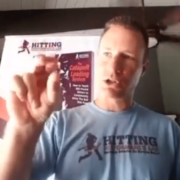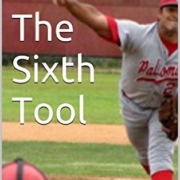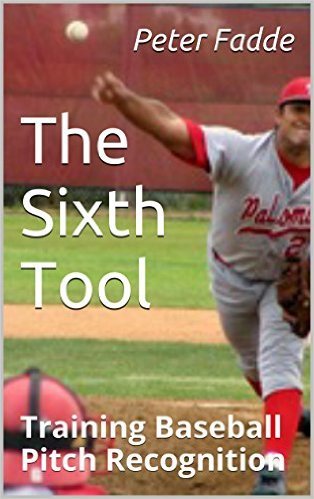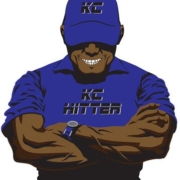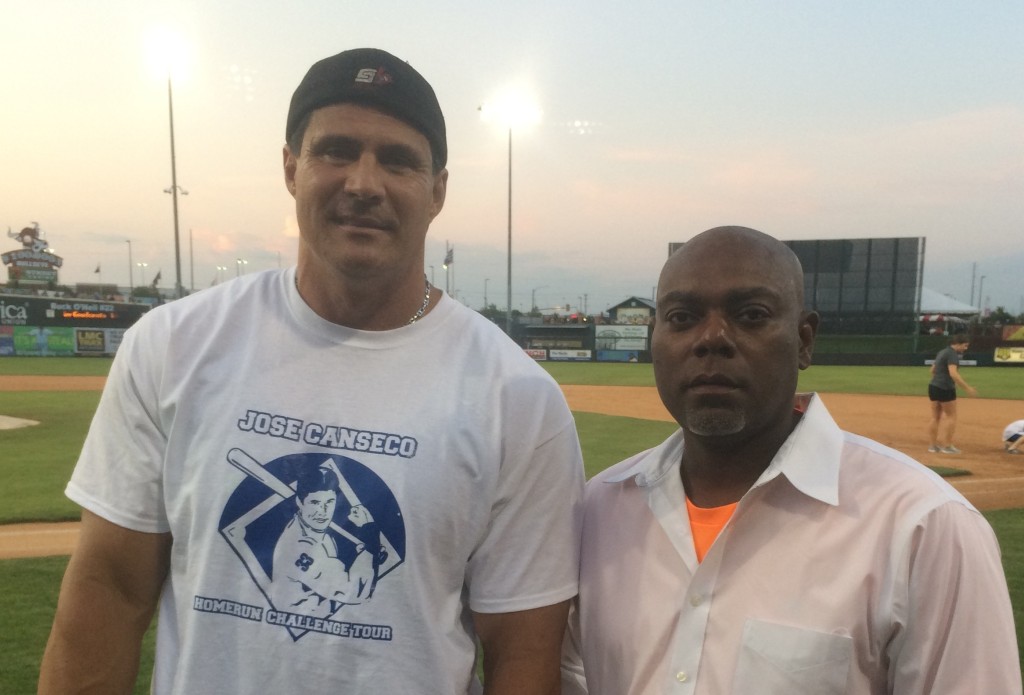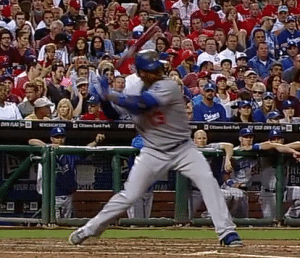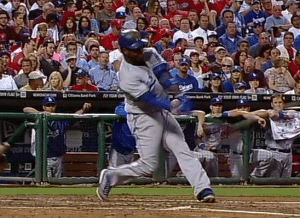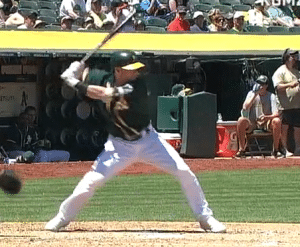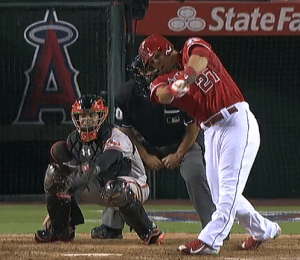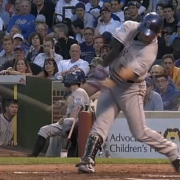STOP Pulling Off The Ball, Increase Batting Average, and Boost Power By Using The Closed Stance?
What’s the best batting stance for power? How do we STOP a hitter from stepping in the bucket (out of the box) when hitting a baseball or softball in 2022? This post will shine light on how to see the ball better, keep the front shoulder in during the swing, and will suggest the best batting stance for power…
I know, I know,
Some well meaning coaches will think, “Well, a closed stance cuts off a hitter’s vision, and/or restricts hip movement”…
I get it. I used to believe the same thing a couple years ago,
…But what I found in my research was counter-intuitive, yet very promising for hitters.
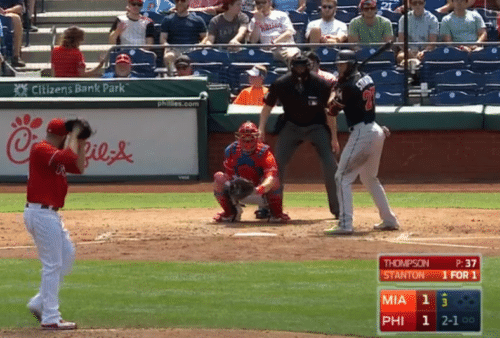
Giancarlo Stanton using his “closed stance”. Photo courtesy: MLB.com
You don’t know what you don’t know, right?
My process is to chew and digest the science, observe how elite hitters apply the movements, and then try it out!
As you’ll soon find out, Giancarlo Stanton did his homework before making this particular change in his swing.
Since there may be many of you raising the same objections I started with, I wanted to discuss:
- Addressing the above “Study of Planes” video, then we’ll move on to…
- Analyzing the small change that has netted BIG results for Giancarlo Stanton this season.
Study of Planes
My good friend Seo Perales shared the above video with me a few years ago. By the way, he’s a multiple level black belt in Brazilian Jujitsu.
We love comparing notes because we both like to seek and explore human movement principles that are validated by science. The only difference is, in his line of work as a Jujitsu instructor, he wants to learn how to break down the body, and I’m into maximizing its effect.
The above video demonstrates the science of movement planes. What are considered weak and strong planes of movement from a Judo perspective.
I think you’ll find the video enlightening.
Now, you may be thinking, “A Judo video? Really?! What can I learn from a video about Judo?”
If you find yourself camped out in ONLY baseball or softball circles, then you’re missing out on A LOT of useful information that will take your hitters to a whole other level.
The video is very applicable to hitting.
Furthermore,
My good friend Lee Comeaux from Texas, who teaches professional and amateur golfers, also brought the power of movement planes to my attention about a year ago…
He told me draw an “X” in the batter’s box from opposite corners, and have the hitter stand on either line when hitting. He’s very versed in Thomas Myers’s book Anatomy Trains. He says hitters standing on one diagonal leg of the “X” encourages the springiness of fascia. He taught this to his 15yo daughter, who has hit over .600 the last couple years playing Fast-Pitch Softball in Texas, which is one of the hotbeds for both baseball and softball competition in the country. Oh and by the way, she also hit a half dozen homers as well.
The second part of this post, I wanted to share the tipping point in addressing Giancarlo Stanton’s new closed stance…
Giancarlo Stanton & The “Dreaded” Closed Stance
The straw that broke the camel’s back for me in writing this post, came from this MLB.com article by David Adler titled, “Closing time: Stanton’s stance fueling surge: Marlins slugger’s home run tear lines up with change to batting stance in June”.
You can go there and read the full article, but I wanted to tease out the quotes from Giancarlo Stanton (and some of David Adler’s commentary), and how Stanton arrived at the batting stance change…
“I just said I was going to try it. Honestly, I had about 30 minutes of work, maybe 45 minutes, before the game,” Stanton told MLB.com Sunday, when he crushed his Major League-leading 45th home run against the Mets at Citi Field. “And then 10 minutes before the game, I was like, ‘This feels more comfortable.'”
Stanton was already having a helluva year, so it’s interesting to me that he made the change when he did, typically a change like this follows a slump. However, this wasn’t a spur of the moment decision – like it sounds from that quote – he did his homework, which you’ll read about shortly…
“My best striking position is closed,” Stanton said. “It’s not smart to try to completely change something in the middle of the season. But if you are 100 percent committed to it … well, you’ve got to be. You’ve got to trust what you’re trying to do. If you change something, you want results right away, otherwise you try to go back. But I trusted it completely and let it ride.”
Sounds contradictory doesn’t it? To have the attitude that you can’t completely change something in the middle of the season – especially when you’re already doing well!! But then he says you MUST commit to giving the change time – that is – IF you’ve done your homework beforehand.
I’ve heard some parents and coaches say mid-season changes aren’t smart. I don’t like to think that way…WHY? Because if you don’t guide the hitter, the hitter will make changes on their own. And if they don’t get highly resourceful on the subject, then this could lead to DISASTER with all the junk hitting info on the net these days.
David Adler did fantastic research illustrating the evolution of Giancarlo Stanton’s closed stance in this Tweet:
You’ve seen how Stanton’s closed his stance by now. But it’s still cool to look at the different stages this season. All these are home runs pic.twitter.com/1xxFGgwIUL
— David Adler (@_dadler) August 21, 2017
In the earlier mentioned article, Adler states…
“Stanton’s closing of his batting stance has correlated with his massive power surge. On June 18, he had 17 home runs in 282 plate appearances; since June 19, he has 28 in 236.
When Stanton hits from those positions [open or straight up], his front side can come open before the pitch arrives, leaving him exploitable.
The closed stance is a natural counter. When Stanton is already turned inward to start, his rotation drives him into the pitch, instead of causing him to fade away from it.”
By the way, for those not doing the math:
- From start of season to June 18th, he hit 1 homer every 16.5 plate appearances, and
- From June 19th on, he hit 1 homer every 8.4 plate appearances…
He cut his rate in half!!!! The closed stance was the ONLY change to his swing in that time frame, so this makes an interesting case study with a decent sample size of plate appearances. See for yourself with the following David Adler Tweet:
Even w/ Giancarlo Stanton’s new closed stance, his swing’s the same. But his feet force him in, help him stay on the ball. L: Aug. R: April pic.twitter.com/v5eXYpq5YB
— David Adler (@_dadler) August 21, 2017
David Adler adds some terms of comparision you may be familiar with…
“With his adjusted stance, Stanton has been driving the ball in the air more often. His rate of fly balls and line drives, per Statcast™, has risen from 41.5 percent prior to June 19 to 50.3 percent since. Stanton’s average exit velocity on those balls has increased from 97.6 mph to 100.8 mph, the highest in the Majors over that time.”
I don’t care that Stanton is a beast, if you increase your Line Drive and Fly Ball Rates (Launch Angle), and Ball Exit Speeds that much, you’ll make a lot of Ground-ball teams VERY VERY upset. Small hitters CAN and DO take advantage of this formula too. Statcast has given hitters the cheat codes to increase offensive productivity!
Furthermore, in the Adler article…
“[His stance] gets him in the position he wants to be in. It looks like it’s keeping him on the ball more, and he seems like he’s seeing it better,” said Christian Yelich, who’s played alongside Stanton as long as any current Marlin — since 2013, when he was 21 and Stanton 23. “Some guys have different problems than others. You go about fixing them or covering them in different ways. It’s all about feel. That’s what works for him, that feel.”
Look at that bold sentence once more because that is one of the most critical keys to this whole thing. Yelich is also tapping into making extreme adjustments, for example, Stanton’s challenge in the past has been pulling off, maybe because of when he tragically got hit in the face a few years ago. Whatever the reason, the extreme adjustment (a closed stance), helps him stay on the ball longer.
CLICK HERE for a video I did on how to make adjustments…the scientific term for this is “Paradoxical Intention”.
Now, here is where the article gets into the research that brought Giancarlo Stanton to the point of taking the stance change seriously…
“But at a level of the game where emulation is fundamental, success begetting imitators, Stanton found his prototypes: Nolan Arenado, Matt Kemp, Adrian Beltre, prominent hitters who do close off. He recognized past greats, too: Hall of Famer Andre Dawson works as a special assistant to the Marlins, and he hit with a closed stance in his playing career. Stanton didn’t copy the technical aspects of their batting stances, but their accomplishments gave him precedent to actually make the change himself.“
Some on Twitter have written this change off as a band-aide, avoiding a true fix. A true fix? Are you kidding me?! Cutting his home-run per plate appearance rate in half IS NOT a true fix!? Dude!! Success leaves clues. These people are saying Giancarlo Stanton is “playing to the slice”, where a golfer who chronically slices the ball will angle his body at setup so they don’t have to fix the real problem…which is not squaring up the club face at impact.
This is a poor attempt to protect an inflexible teaching philosophy, and sheer laziness on their part to get educated on their craft they claim to know a lot about. You instructors seriously think Giancarlo Stanton is not “squaring the ball up” at impact since June 19th and is just “playing the slice”? That is laughable. You don’t know what you don’t know, right?
This is the problem I have with instructors with inflexible hitting systems…they’re WILLFULLY IGNORANT to experimenting with things that could push their hitters forward, especially movements validated by science. We’re ALL in this together, and we’re ALL helping hitters. It’s NOT about your ego or protecting “your brand” coaches.
But I digress…
Here’s some insight into Giancarlo Stanton’s thought process with the change…
“I just know the guys with success,” Stanton said. “Arenado and Kemp, those guys, you know you can have a high average with it. So that kind of gave me the green light to try it…I knew it could work. Not very many people did it. But I know people like Hawk and them did it in the old days — and it worked for them, too.”
The Bottom Line…
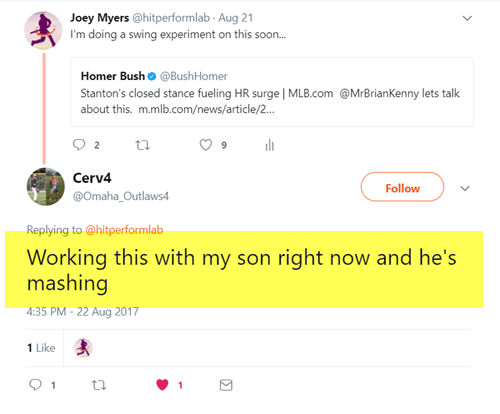
A day or two after re-tweeting Homer Bush’s Tweet about Giancarlo Stanton’s closed stance, I received this response from @Omaha_Outlaws4…
I understand your objections that a closed stance may cut off a hitter’s vision, and/or restricts hip movement. You’ve heard me talk a lot about “keeping the back foot sideways”, well, this plays right into that.
Matt Nokes is religious on restricting hip movement to the point of impact with keeping the back foot sideways. Homer Bush agrees in this interview. So are the Backspin Tee guys Taylor and Jarrett Gardner. LIGHT BULB! The closed stance does this naturally.
The main benefit of restricting hip movement at impact (includes keeping back foot sideways) that you’ll hear from Nokes, Bush, and the Gardner Brothers, is to keep the barrel in the hitting zone longer. This increases BA and Slug%.
Here’s my advice:
- Chew and digest the science,
- Observe how elite hitters apply the movements, and then
- Try it out!
If it doesn’t work after giving it the ol’ college try, then toss it.
As many of you know, I will gladly eat crow and change my hitting system IF you can show me the science, swing experiments, and many elite hitting examples that I can’t ignore the issue.
This is an informal Part-1 to a Zepp swing experiment I’ll be doing on the Giancarlo Stanton closed stance in the near future. So stay tuned…


